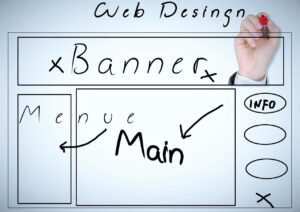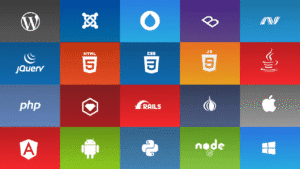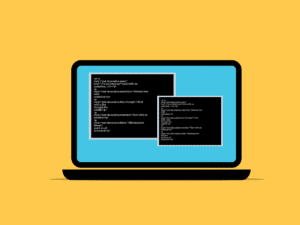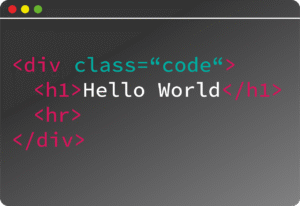
Mastering Tailwind CSS Basics: A Complete Guide to Rapid UI Development
Introduction
The world of front-end design is changing fast. More developers now prefer utility-first CSS frameworks, especially Tailwind CSS. This approach helps build beautiful websites quickly without sacrificing control. Tailwind’s popularity keeps growing because it saves time, offers endless customization, and keeps UIs consistent. If you’re just starting or want to sharpen your skills, this guide covers the essentials of Tailwind CSS. Get ready to turn your ideas into real designs faster than ever.
What is Tailwind CSS? An Overview
Definition and Core Philosophy
Tailwind CSS is a utility-first CSS framework that helps you style websites with small, single-purpose classes. Unlike traditional frameworks like Bootstrap, which come with pre-built components, Tailwind focuses on giving you tiny classes that do one thing. The main idea? Use multiple utility classes directly inside your HTML to style elements. This makes your code cleaner, faster, and easier to modify.
Tailwind champions minimalism and personalization. Instead of writing endless CSS files, you pick the exact styles you want by combining utility classes. It’s all about giving you control while reducing bloat.
Historical Context and Adoption
Launched in 2017, Tailwind CSS quickly gained popularity among front-end developers. It was created by Adam Wathan, who wanted a more flexible way to build UIs. Today, many companies like GitHub, Laravel, and Basecamp use Tailwind in their projects. Its rising adoption shows how powerful and adaptable it has become.
Thanks to its open-source nature, Tailwind keeps growing with new plugins and features. It’s no longer just a niche tool but a standard for modern web design.
Key Features and Advantages
- Rapid styling: Apply styles instantly with utility classes such as
p-4,text-center, orbg-blue-500. - Deep customization: Tailwind lets you modify default settings through a configuration file. Change colors, fonts, and breakpoints easily.
- Built-in responsiveness: Use simple prefixes like
sm:orlg:to make your UI mobile-friendly. - Real-world example: Many big sites now use Tailwind, including GitHub’s interface components, proving its strength in real projects.
Setting Up Tailwind CSS
Installation Methods
If you want to try Tailwind fast, use its CDN link for quick prototyping. Just include the stylesheet in your HTML file, and you’re ready to style.
For more control, install via npm inside your project folder. This way, you can customize everything, update regularly, and integrate with your build system.
Configuring Tailwind
Create a tailwind.config.js file. This is where you can change default themes, add custom colors, or extend utility classes. It’s the backbone for tailoring Tailwind to suit your project needs.
Easily enable variants like hover, focus, or active states to make your design interactive.
Integrating with Build Tools
Most modern projects use tools like PostCSS, Webpack, or Vite. Installing Tailwind with these helps automate CSS generation and optimization.
For frameworks like React, Vue.js, or Next.js, Tailwind integrates smoothly, making development faster.
Pro tip: Always purge unused CSS in production to keep your bundle small. Tailwind’s built-in purge feature does this automatically, saving you bandwidth.
Core Concepts and Syntax of Tailwind CSS
Utility-First Class Naming
Classes in Tailwind follow a simple pattern — think of them as quick commands. p-4 adds padding, text-center aligns text, and bg-blue-500 gives a blue background.
This consistency makes it easy to learn and remember class names. The goal? Speed up styling without writing custom CSS.
Responsive Design Utilities
Tailwind uses breakpoints as prefixes. For example, md:text-xl applies larger text on medium screens and up. This approach follows mobile-first design, ensuring your site looks good everywhere.
Experiment with changing layouts on different devices by stacking classes like sm:flex or lg:grid.
State Variants and Pseudo-Classes
Want a button to turn blue on hover? Just add hover:bg-blue-600.
You can even combine states — like hover:focus:outline-none — to create interactive, accessible elements easily.
Customizing and Extending Utilities
Sometimes, the default classes aren’t enough. Tailwind lets you add your own utilities or modify existing ones through the configuration file.
This way, you stay flexible. Many experts recommend this approach to keep your CSS manageable as projects grow.
Building Layouts and Components
Using Flexbox and Grid Utilities
Create complex layouts with simple classes: flex, flex-col, or grid. For example, use grid grid-cols-3 gap-4 to make three equal columns with spacing.
Responsive layouts become a breeze with Tailwind’s utility classes, adjusting automatically at breakpoints.
Typography and Spacing
Design visually appealing text using utilities like text-lg, font-semibold, or leading-relaxed.
Consistent spacing helps keep your layout clean. Apply m-4 for margins or p-2 for padding to separate sections.
Buttons, Forms, and Interactive Elements
Style buttons with classes like bg-green-500, text-white, and rounded.
Make forms accessible using aria-labels, and style input fields with simple utility classes.
A well-designed form boosts user experience and trust.
Practical Example
Let’s build a basic landing page. Start with a container max-w-4xl mx-auto p-4. Inside, add a header text-3xl font-bold mb-4, a paragraph with mb-4, and a button with bg-blue-500 hover:bg-blue-600 text-white px-4 py-2 rounded.
This straightforward setup offers a professional look with minimal code.
Optimizing Performance and Workflow
Purging Unused CSS
Tailwind’s purge option removes classes not used in your code before deploying. This heavily reduces your site’s CSS size, boosting load times.
Just configure purge in your tailwind.config.js, and watch your bundle shrink.
Using Plugins and Extensions
Plugins extend Tailwind’s core with functions like forms handling, advanced typography, and aspect ratios.
Add plugins by installing them via npm and including them in your configuration file for a richer toolkit.
Workflow Automation
Integrate Tailwind with IDEs like VSCode through dedicated extensions. It helps auto-complete classes and lint code for consistency.
Automating your workflow reduces errors and speeds up your development process.
Real-World Case Study
A startup optimized their site using Tailwind. They trimmed their CSS size, improved load speeds, and built new features faster. This led to better user engagement and quicker updates, showcasing Tailwind’s power in real projects.
Conclusion
Learning the basics of Tailwind CSS unlocks a faster, more flexible way to design websites. Its utility-first approach offers speed, customization, and consistency that small teams or solo developers need. As you experiment with classes, configure your project, and build layouts, you’ll discover how powerful Tailwind truly is.
Start simple — style a button, arrange a layout — then expand your skills, customize configurations, and integrate into your workflow. Following the official docs and community resources helps you stay ahead. With Tailwind CSS, complex UI design becomes just a matter of choosing the right utility classes. Get ready to build faster, smarter, and more beautiful websites.



































































































